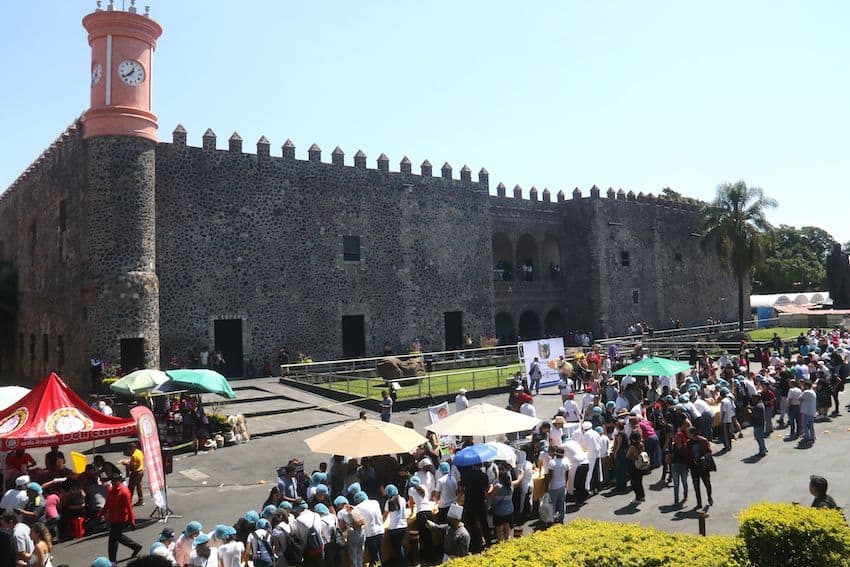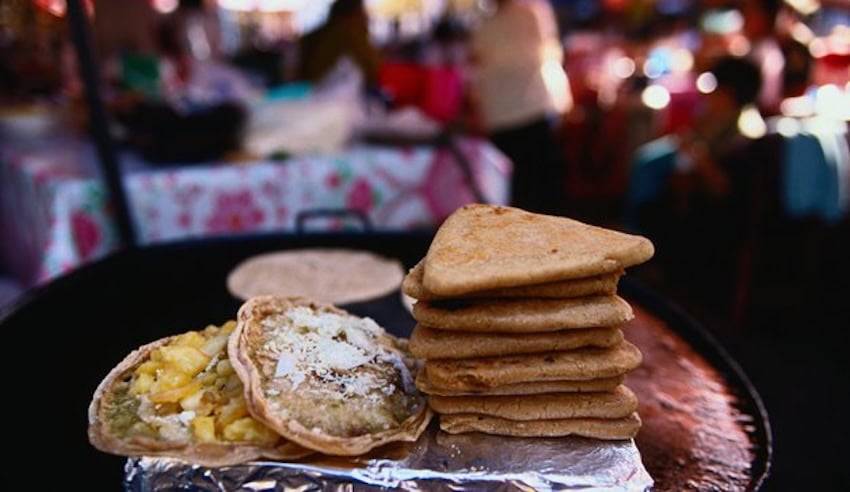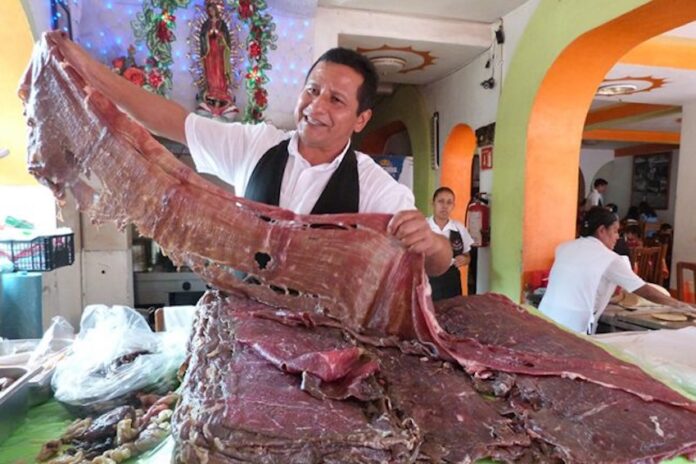The story of Cecina de Yecapixtla begins with the earliest indigenous cultures in Mesoamerica. The idea of salting meat to preserve it dates back thousands of years. In pre-Columbian Mexico, for example, the practice is believed to have originated in Chiapas with the salting of deer meat.
After the Spanish conquest in the early 16th century, livestock such as cattle were introduced to Mexico. Over time, this led to the development of cured beef specialties such as machaca and carne seca, culinary staples especially popular in northern states like Chihuahua and Sonora.

However, the crown jewel of Mexico’s cured and air-dried beef is not found in the north, but in the south-central state of Morelos. It’s called cecina, the delicacy that has made municipalities like Yecapixtla and Puente de Ixtla famous.
The development of cecina production in Morelos
Cecina is originally from Spanish provinces like León, but it came to Mexico the same way the Spanish themselves did: aboard ships. The history and hand-crafted tradition associated with its production in Morelos began in Yecapixtla during the 16th century on land granted to Hernán Cortés by the Spanish Crown — probably contemporaneous with the opening of the Convento de San Juan Bautista by Augustinian friars — and these ancestral methods have been handed down from generation to generation ever since.
However, it bears noting that Yecapixtla itself dates back to 1325 when it was founded by the Xochimilcas. The proliferation of cecina, though, is a much more recent phenomenon. In 1869, the year Morelos became a state, there were reportedly only three families dedicated to making the cured meat in Yecapixtla.
Like another Spanish specialty, jamón serrano, cecina is sliced very thinly but widely. The leg cut, called cañada or pulpa negra in Spanish, is sliced no more than a few millimeters thick before it’s salted on both sides and laid out flat on tables of wooden planks up to 40 feet long — necessary to accommodate the extended strips — to air dry in the sun. This is necessary for cecina to take on its characteristic color. A master hand is needed not only to cut the meat properly but to salt it finely.
The time allotted for air drying varies, as the beef should ideally be 40% dehydrated. Generally, no more than 45 minutes to an hour is allowed for this step before the meat is folded and hung on poles or over wires to cool for about 10 minutes in a closed room. Finally, the cecina is greased with fat before being stored in wooden or plastic containers until sold.

When the cuts are eventually grilled, they’ll have a properly smoky flavor, with a slightly salty undertone.
The best ways to experience cecina in Morelos
So beloved is cecina in Morelos that an estimated 200 tons of it are sold weekly. The best way to enjoy cecina locally is with sides of nopales, onion or leek and fresh cheese, or in tacos with similar ingredients, plus a spicy salsa. Longaniza sausages are another popular accompaniment.
Nopales, of course, are likewise a specialty of Morelos, as is queso. The municipality of Tlalnepantla alone typically produces more than 33% of the national nopal total annually. The prickly pear cactus from which nopales are harvested is memorialized on the Mexican flag, with an eagle perched atop it devouring a snake.
The municipal market in Yecapixtla is a great place to sample locally made cecina, as is the former Cuatros Vientos, now known as Fonda 107. Located in Alpuyeca, on the highway between Cuernavaca and Acapulco, this travelers’ favorite has been serving delicious regional specialties such as cecina and requesón for over 50 years.
The origin of itacates

The gastronomy of Morelos is also distinguished by its itacates, triangular gordita-style treats made from masa de maíz and cut open to fill with toppings like beans, cheese, chorizo, potatoes or even chapulines (grasshoppers).
The name comes from the Nahuatl word “itacatl,” meaning culinary provisions bestowed, as at communal gatherings. Itacates are closely associated with the town of Tepotzlán, where they were traditionally eaten by cornfield harvesters during breaks. This tradition is likely influenced by the fact that Quetzalcoatl, the god responsible for giving corn to Mexico, is said to have been born in Tepotzlán.
The birth of an iron-clad, armored taco
Plenty of Mexican taco styles are ubiquitous around the country. Not so the acorazado,whose name literally means “battleship.” This taco gets its “armor” not from its ingredients, but from the use of two tortillas to maximize protection for the filling. Born in Cuautla during the age of the Mexican Revolution, this specialty, too, was inspired by the hardworking population of Morelos.
Originally, the ingredients were rice and a hard-boiled egg, cushioned high and low by tortillas. Rice, like nopal, is a major crop in Morelos, and the state leads the way nationally in its production. The simplicity of the original recipe has since evolved into multiple permutations, as the taco spread from Cuautla and took root in Cuernavaca.
The spirits of Morelos

Morelos is known for several spirits, including a potent aguardiente de caña known as Zacualpan — named for the municipality, Zacualpan de Amilpas, from which it springs — made as strong as the law will allow. It has been distilled in the state since 1896 and is sold in natural or aged varieties, often flavored by fruits.
For over 100 years, Tehuixtla, in the south of the state, has for been making a version of rompope, the uniquely Mexican rum-spiked eggnog invented by Poor Clare nuns at the Santa Clara convent in Puebla. In 1890, nuns from that city visited Tehuixtla to show local women how to make more money from their dairy products, and a local variation of the drink, which omitted vanilla flavor in favor of cinnamon, was born.
Although not one of the nine Mexican states permitted to make mezcal under the appellation of origin label, the town of Palpan de Baranda in Morelos has become famed for its “maguey distillate,” better known locally as palpeño. Pulque, meanwhile, is made in the municipality of Huitzilac and it’s celebrated each May during the local Feria del Pulque y la Barbacoa.
Chris Sands is the Cabo San Lucas local expert for the USA Today travel website 10 Best, writer of Fodor’s Los Cabos travel guidebook and a contributor to numerous websites and publications, including Tasting Table, Marriott Bonvoy Traveler, Forbes Travel Guide, Porthole Cruise, Cabo Living and Mexico News Daily. His specialty is travel-related content and lifestyle features focused on food, wine and golf.
